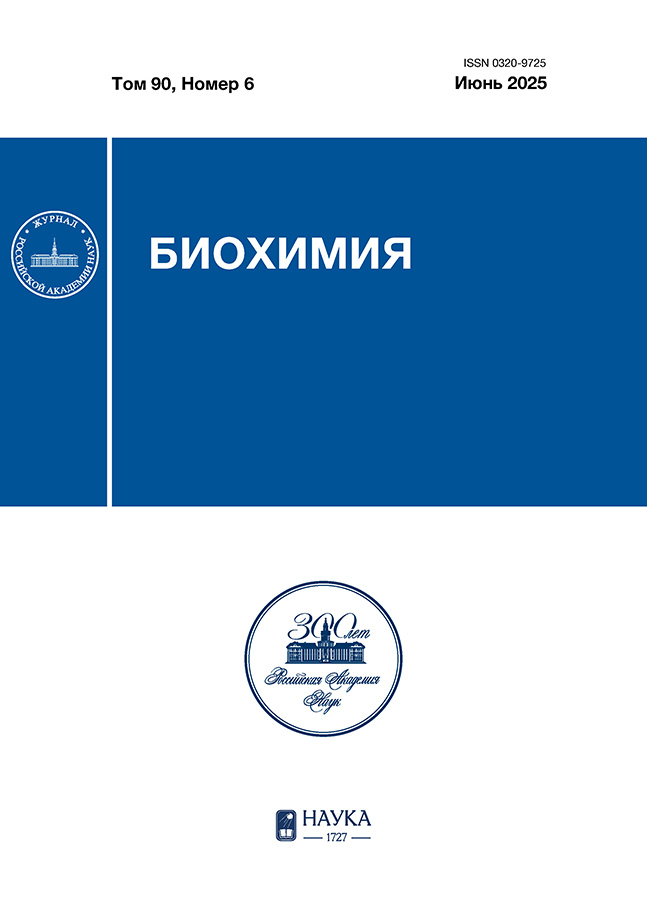Системы рестрикции-модификации со специфичностями GGATC, GATGC и GATGG. Часть 1. Эволюция и экология
- Авторы: Спирин С.А.1,2,3, Русинов И.С.1, Макарикова О.Л.4, Алексеевский А.В.1,3, Карягина А.С.1,5,6
-
Учреждения:
- Московский государственный университет имени М.В. Ломоносова
- Высшая школа экономики
- Научно-исследовательский институт системных исследований
- Московский физико-технический институт
- Национальный исследовательский центр эпидемиологии и микробиологии имени Н.Ф. Гамалеи
- Всероссийский научно-исследовательский институт сельскохозяйственной биотехнологии
- Выпуск: Том 90, № 4 (2025)
- Страницы: 550-558
- Раздел: Статьи
- URL: https://ruspoj.com/0320-9725/article/view/685813
- DOI: https://doi.org/10.31857/S0320972525040052
- EDN: https://elibrary.ru/IHWJGD
- ID: 685813
Цитировать
Полный текст
Аннотация
В работе исследована эволюция систем рестрикции-модификации, белки которых содержат эндонуклеазный домен семейства RE_AlwI и либо две ДНК-метилтрансферазы, каждая с доменом семейства MethyltransfD12, либо одну ДНК-метилтрансферазу с двумя доменами этого семейства. Все такие системы узнают одну из трёх последовательностей ДНК, а именно GGATC, GATGC или GATGG, а эндонуклеазы рестрикции этих систем разделяются по сходству полных последовательностей на три клады, однозначно соответствующие специфичностям. ДНК-метилтрансферазные домены этих систем по сходству последовательностей делятся на две группы, причём два домена каждой системы относятся к разным группам, а в пределах каждой группы домены разделяются на три клады, соответствующие специфичности. Обнаружены признаки множественных межвидовых горизонтальных переносов систем в целом, а также свидетельства переноса генов между системами, в том числе переноса одной из ДНК-метилтрансфераз с изменением специфичности. Выявлены эволюционные связи ДНК-метилтрансфераз из таких систем с другими, в том числе одиночными, ДНК-метилтрансферазами.
Полный текст
Об авторах
С. А. Спирин
Московский государственный университет имени М.В. Ломоносова; Высшая школа экономики; Научно-исследовательский институт системных исследований
Автор, ответственный за переписку.
Email: sas@belozersky.msu.ru
Россия, Москва; Москва; Москва
И. С. Русинов
Московский государственный университет имени М.В. Ломоносова
Email: sas@belozersky.msu.ru
Россия, Москва
О. Л. Макарикова
Московский физико-технический институт
Email: sas@belozersky.msu.ru
Россия, Москва
А. В. Алексеевский
Московский государственный университет имени М.В. Ломоносова; Научно-исследовательский институт системных исследований
Email: sas@belozersky.msu.ru
Россия, Москва; Москва
А. С. Карягина
Московский государственный университет имени М.В. Ломоносова; Национальный исследовательский центр эпидемиологии и микробиологии имени Н.Ф. Гамалеи; Всероссийский научно-исследовательский институт сельскохозяйственной биотехнологии
Email: sas@belozersky.msu.ru
Россия, Москва; Москва; Москва
Список литературы
- Williams, R. J. (2003) Restriction endonucleases: classification, properties, and applications, Mol. Biotechnol., 23, 225-244, https://doi.org/10.1385/mb:23:3:225.
- Roberts, R. J. (2003) A nomenclature for restriction enzymes, DNA methyltransferases, homing endonucleases and their genes, Nucleic Acids Res., 31, 1805-1812, https://doi.org/10.1093/nar/gkg274.
- Madhusoodanan, U. K., and Rao, D. N. (2010) Diversity of DNA methyltransferases that recognize asymmetric target sequences, Crit. Rev. Biochem. Mol. Biol., 45, 125-145, https://doi.org/10.3109/10409231003628007.
- Vasu, K., and Nagaraja, V. (2013) Diverse functions of restriction-modification systems in addition to cellular defense, Microbiol. Mol. Biol. Rev., 77, 53-72, https://doi.org/10.1128/mmbr.00044-12.
- Fokina, A. S., Karyagina, A. S., Rusinov, I. S., Moshensky, D. M., Spirin, S. A., and Alexeevski, A. V. (2023) Evolution of restriction–modification systems consisting of one restriction endonuclease and two DNA methyltransferases, Biochemistry (Moscow), 88, 253-261, https://doi.org/10.1134/S0006297923020086.
- Mistry, J., Chuguransky, S., Williams, L., Qureshi, M., Salazar, G. A., Sonnhammer, E. L. L., Tosatto, S. C. E., Paladin, L., Raj, S., Richardson, L. J., Finn, R. D., and Bateman, A. (2020) Pfam: the protein families database in 2021, Nucleic Acids Res., 49, D412-D419, https://doi.org/10.1093/nar/gkaa913.
- Roberts, R. J., Vincze, T., Posfai, J., and Macelis, D. (2014) REBASE – a database for DNA restriction and modification: enzymes, genes and genomes, Nucleic Acids Res., 43, D298-D299, https://doi.org/10.1093/nar/ gku1046.
- Edgar, R.C. (2004) MUSCLE: multiple sequence alignment with high accuracy and high throughput, Nucleic Acids Res., 32, 1792-1797, https://doi.org/10.1093/nar/gkh340.
- Lefort, V., Desper, R., and Gascuel, O. (2015) FastME 2.0: A comprehensive, accurate, and fast distance-based phylogeny inference program, Mol. Biol. Evol., 32, 2798-2800, https://doi.org/10.1093/molbev/msv150.
- Kumar, S., Stecher, G., and Tamura, K. (2016) MEGA7: Molecular Evolutionary Genetics Analysis version 7.0 for bigger datasets, Mol. Biol. Evol., 33, 1870-1874, doi: 10.1093/molbev/msw054.
- Letunic, I., and Bork, P. (2021) Interactive tree of life (iTOL) v5: an online tool for phylogenetic tree display and annotation, Nucleic Acids Res., 49, W293-W296, https://doi.org/10.1093/nar/gkab301.
- Li, W., and Godzik, A. (2006) Cd-hit: a fast program for clustering and comparing large sets of protein or nucleotide sequences, Bioinformatics, 22, 1658-1659, https://doi.org/10.1093/bioinformatics/btl158.
- Burge, C., Campbell, A. M., and Karlin, S. (1992) Over- and under-representation of short oligonucleotides in DNA sequences, Proc. Natl. Acad. Sci. USA, 89, 1358-1362, https://doi.org/10.1073/pnas.89.4.1358.
- Rusinov, I. S., Ershova, A. S., Karyagina, A. S., Spirin, S. A., and Alexeevski, A. V. (2018) Comparison of methods of detection of exceptional sequences in prokaryotic genomes, Biochemistry (Moscow), 83, 129-139, https://doi.org/10.1134/S0006297918020050.
- Karlin, S., Burge, C., and Campbell, A. M. (1992) Statistical analyses of counts and distributions of restriction sites in DNA sequences, Nucleic Acids Res., 20, 1363-1370, https://doi.org/10.1093/nar/20.6.1363.
- Rusinov, I., Ershova, A., Karyagina, A., Spirin, S., and Alexeevski, A. (2015) Lifespan of restriction-modification systems critically affects avoidance of their recognition sites in host genomes, BMC Genomics, 16, 1-15, https://doi.org/10.1186/s12864-015-2288-4.
- Brézellec, P., Hoebeke, M., Hiet, M. S., Pasek, S., and Ferat, J. L. (2006) DomainSieve: a protein domain-based screen that led to the identification of dam-associated genes with potential link to DNA maintenance, Bioinformatics, 22, 1935-1941, https://doi.org/10.1093/bioinformatics/btl336.
- Murray, N. E. (2002) 2001 Fred Griffith review lecture. Immigration control of DNA in bacteria: self versus non-self, Microbiology, 148, 3-20, https://doi.org/10.1099/00221287-148-1-3.
- Friedrich, T., Fatemi, M., Gowhar, H., Leismann, O., and Jeltsch, A. (2000) Specificity of DNA binding and methylation by the M.FokI DNA methyltransferase, Biochim. Biophys. Acta, 1480, 145-159, https://doi.org/10.1016/s0167-4838(00)00065-0.
- Horton, J. R., Liebert, K., Bekes, M., Jeltsch, A., and Cheng, X. (2006) Structure and substrate recognition of the Escherichia coli DNA adenine methyltransferase, J. Mol. Biol., 358, 559-570, https://doi.org/10.1016/j.jmb.2006.02.028.
Дополнительные файлы















